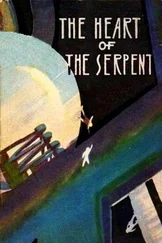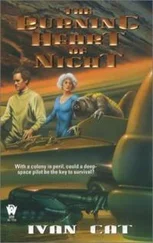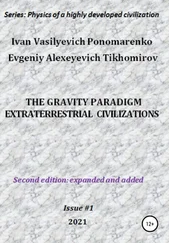He became bolder. He drew the beam from nail to nail, emulating Nieuwenhuizen’s self-assured gestures, hoping to trace the outlines of just one room, a passage way, an alcove that would presage a dwelling. The nails winked and told him nothing. He could not make out even a fragment of the blueprint nailed to the ground.
Growing increasingly agitated, and casting the need for stealth to the wind, he began to stride back and forth, doodling the outlying areas for any he might have missed and stirring them into significance. And even though there was no sign of the new house, he found himself whispering vehemently, “Bedroom. . yes! Double bed, king-size. . yes! Bathroom en suite, shower cubicle. . yes! yes!” When this approach failed to produce tangible results, it came to him that everything would be crystal clear if only he could view it from above, from some vantage-point like the anthill — no, that had ceased to exist — like the tree — no, no, that was full of thorns — like the roof of his own house! The impropriety of this idea, especially at such a late hour, brought him down to earth with a bump, and he quickly went home.
Nieuwenhuizen saw him go, from the mouth of the tent, and laughed like a drain; Mrs Malgas saw him coming, from the lounge window, with tears in her eyes, and hurried back to bed, where she pretended to be sleeping.“Queen-size. . never! Over my dead body!”
Mr Malgas tossed and turned, trying to remember the disposition of the nails and chart them dot for dot, but try as he might, his markers were swept away repeatedly by avalanches of punctuation.Never fear, Malgas practised harder than ever.
And late one afternoon his persistence paid off. He had been crisscrossing the plan for an hour on end with his chin on his chest and his hands behind his back. Nieuwenhuizen was sitting at the fireplace, in which some split logs and balls of newspaper had been stacked in a pyre, peeling a clutch of lumpy roots for a stew. He had a tolerant smile on his face. Suddenly a light-bulb blazed in a dusty recess in Malgas’s mind, and he understood why he could not see the new house: it was underground!
“What a clot I’ve been, assuming that these nails mark the finger of light from one shiny marker to the next, foraging in the foundations, when it’s perfectly obvious — once you cotton on to it — that they mark the chimney-pots, gutters, eaves, spires, domes and dormers, to name but a handful of your more prominent roof-top features. This nail here is clearly a television aerial. Two pigeons over there — that’s a nice touch — a family of gargoyles, and here’s a weathercock.”
Malgas felt the Cape Dutch gables of the subterranean house thrusting up against his soles. He took off his shoes. That did the trick. In a transport of heightened sensitivity, he tottered along a gutter, clambered up a steep, shingled roof and established himself next to a chimney with a cloud of smoke swirling about his knees.
Then he came to his senses and found that he was standing in the ash-heap.
Nieuwenhuizen, who was crouching nearby dicing his roots on a chopping-block with a hand-beaten copper cleaver, called out, “Good one, Mal! You’re getting the hang of it.”
Malgas was embarrassed.
He went home looking for sympathy, but Mrs glared at his laddered socks, rattled her newspaper and gave him a lecture: “Terrible times we’re living in. Death on every corner. The forces of destruction unleashed upon an unsuspecting public. Trains colliding, ferries capsizing, mini-buses overturning, air liners plummeting from the sky on top of suburbs, massacres in second-class railway coaches, public transport in general becoming unsafe, rivers bursting their banks, earthquakes shaking everything up, volcanoes erupting, bombs exploding, businesses going bang, buildings collapsing, among other things. And on top of all this, as if we don’t have enough on our plates, a lunatic on our doorstep. And on top of the top, his accomplice under our own roof.”
“It could be worse.”
“It could be better. Look here: BOF! in a bubble. Sometimes I don’t know whether to laugh or cry. Here, a cat cracking jokes in English. Ducks in suits and ties, a dog in a flashy sports coat, a mouse driving a car. And here’s your foolish friend to a T: this man is walking on thin air, if you don’t mind, until someone points it out to him. . and that makes him fall like an angel.”
Out of the blue shadows of a Sunday afternoon, Nieuwenhuizen let it be known that the plan had reached maturity. Malgas’s joy in this news was premature and short-lived. Apparently, the fact that the plan was mature did not imply that the actual construction was about to begin; rather, it meant that the plan could now be completed, and unfortunately Nieuwenhuizen alone was qualified to perform this delicate operation. He sent Malgas packing, with strict instructions to lie low until his presence was requested at the official unveiling.
“I’ve got your interests at heart,” Nieuwenhuizen said. “You’ve been a sport, but there’s really no point in seeing bits and pieces of the plan. To get the proper effect you need to see the whole thing, fully assembled.”
Feeling that he had unwittingly passed some test, and failed another, Malgas said, “Thank you, thank you,” and left.
Nevertheless, as soon as he arrived home he ordered a beer shandy and a bowl of salted peanuts from Mrs and when she went to do his bidding usurped her stool behind the net curtain.
She did not protest. “I’m tired of humouring Him anyway. He loves being the centre of attraction, like someone else I know.”
Mr Malgas had hardly installed himself when Nieuwenhuizen popped out from behind the thorn-tree with a ball of string in his hand. After a brief search he squatted down and attached the end of the string to the head of a nail, tying several knots of different kinds — Mr Malgas spotted a clove-hitch and two grannies — and tugging hard to make sure they held. Mr Malgas judged correctly that this was no ordinary nail and made a note of its position (IE), but he had no way of knowing that it was the inaugural nail, the very first one to take its place in the plan.
Nieuwenhuizen stuck his index fingers into either end of the cardboard tube on which the string was wound and swung out his forearms like hinged brackets. He raised them and lowered them a few times, as if he was testing out a patent string-dispenser. Apparently the gadget worked, for he now walked confidently backwards, playing out the string as he went, until he bumped into Malgas’s wall. He chose another nail and looped the string around it, performed a difficult manoeuvre with the whole ball which unexpectedly resulted in a slipknot, and pulled that tight.
Mr Malgas’s standpoint may have been comfortable, but it was also limiting, and he found that he couldn’t determine what block of the grid this second nail was in. Oh well, it didn’t seem to matter. The line between Point A and Point B (Obscured), as he spontaneously renamed them, was so beautiful, so true, that he laid his eyes on it with love. Upon such a line one wished, without even thinking about it, to erect a noble edifice. This desire stretched the line so tight that it hummed with possibility and he grew afraid that it would snap.
Nieuwenhuizen, meanwhile, had trotted off to the hedge in search of another nail. He dropped down on all fours and scrambled in among the woody stems, thrashed around in an uproar of splintering twigs and dust, re-emerged boots first, picked himself up, shook himself like a spaniel, and set off again, wagging the line behind him.
The technique was clumsy, Mr Malgas thought, as his initial infatuation with it wore off, but the intention was clear: this new line, B (Obscrd) to C, proposed a wall. It was a little too close to his own wall for comfort, perhaps, but what the hell, it was also a beautiful line.
Читать дальше












